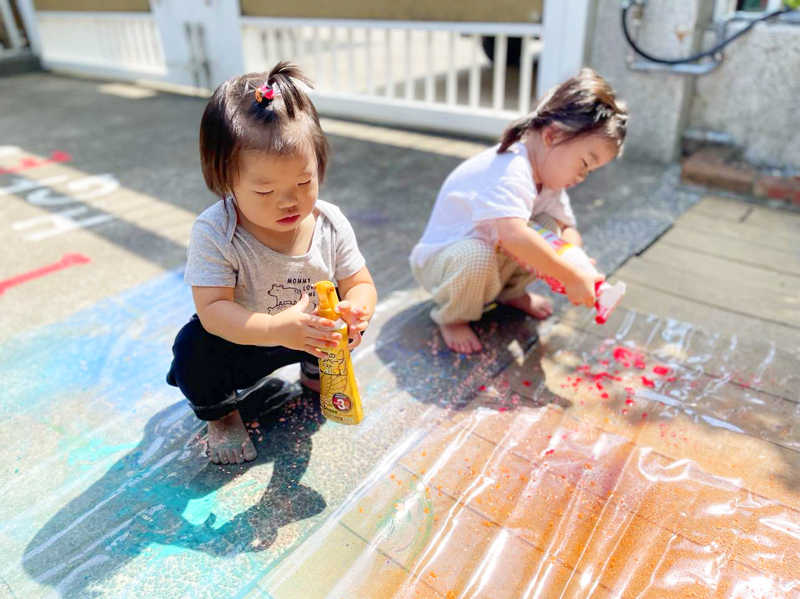Table Manners For Toddlers
If there is one lesson you have probably learned as a parent, it is to expect the most embarrassing moments to occur at the most inappropriate times. Mealtime is certainly no exception — but take heart, manners can be taught at a young age.
Many manners mishaps seem to happen at the table for the under 5 set. So, when your toddler says or does something that makes it appear as if you, as a parent, have absolutely no idea what table manners are... say to yourself, "Don't worry, it's my rite of passage as a parent" (and of course, it makes for great dinner party conversation).
Start early - "You should start teaching them around the age of 2."
Your child is never too young to begin teaching the basics. The dining table will be the setting for many important happenings in your child's life.
It may, one day, be the setting for meeting his girlfriend's parents for the first time, a lunch with a potential employer or a dinner with upper management at the office holiday party. No matter what the occasion, knowing how to navigate his way through a meal will tremendously benefit your child.
Most children will master these dining skills by age 5, but you should start teaching them around the age of 2. Of course, there will be some exceptions to this, but as your toddler grows and matures, the more difficult dining skills can be taught and mastered.
Things your child should never do at the table
Begin as you mean to go on! Teach your toddler to never:
- Begin eating until everyone has been served.
- Lick the knife! Sharp objects should never be put in the mouth, not to mention that Band-Aids don't do well on the tongue.
- Lean back on a chair's hind legs.
- Speak with food in his mouth.
- Chew with her mouth open. In addition, don't chew noisily.
- Put more in his mouth than he can chew. Small bites should be encouraged. In addition, food should never be shoveled.
- Interrupt others when they are talking.
- Point utensils at others.
- Leave the chair out when he gets up. It should always be pushed in when he steps away from the table.
- Take the last bit of food without first offering it to others at the table.
- Talk about gross or gossipy subjects.
- Get up until everyone else is finished eating.
- Put elbows on the table. After all, Mae West once said, "Keep all uncooked joints off the table."
Dining faux pas
Here are just a few of the many dining dos you should begin teaching your child:
- Your napkin should be placed on the lap when you sit down. It is unfolded on your lap, not above the table. If someone inadvertently took your napkin, don't shout, "Who took my napkin?" Quietly ask for another. Many parents ask if it is OK to tuck their child's napkin into the collar to prevent spillage onto clothes. You may do so if your child is 5 or younger.
- Feet should be flat on the floor (if they reach) and have your back against the chair — good posture!
- Hold the glass with two hands if necessary. If the glasses are more formal, small hands can hold the stem to prevent tipping or dropping.
- If a bread basket or other food item is passed to you, remember to continue passing to the right. If the dish is closest to you before you begin passing, offer it to the person to your left and then pass to the right.
- If you must sneeze or cough, turn your head toward your shoulder and cover your mouth with your napkin or hand (preferably your napkin).
- Always wipe your mouth with your napkin before taking a sip. Greasy lips leave an unpleasant and unappetizing ring on the glass.
- If you must use the bathroom, simply say, "excuse me" and get up. If there are guests at the table, you need not let everyone know where you are going.
- Get in and out of your chair on the right side.
Saying grace
Your toddler may or may not be familiar with the custom of saying grace. Explain to your child that other families may give thanks before a meal. It may be something simple like, "Lord, thank you for the food we are about to receive. Amen." Or it may be a song that is sung by all at the table. No matter how a family handles grace, anything new to a child can be intimidating. You can prepare your child to handle it like a pro by instructing him to follow what others are doing. He need not say anything, but by bowing his head and closing his eyes during grace, he is showing respect.
If you are having a child over for dinner and your family says grace, you should tell the child's parents ahead of time (unless, of course, they already know). They can then talk to their child about it, so she is not surprised and confused. Giving a parent the heads up is simply a matter of courtesy.
Gulp... drinks!
Toddlers love to assert their independence and are big advocates of the "I can do it myself" mentality. When it comes to drinks, there are a few etiquette dos and don'ts that should be enforced.
First, your child should not reach in front of or across others to get a drink. Rather, she should politely ask for a drink (remembering her please and thank you). If the juice container or pitcher is too heavy or awkward, she should use two hands to pour. One hand should hold the handle, while the other supports the side of the container. Remind your child that it is OK to ask for help when pouring a drink.
Slurping and gulping is quite unpleasant (and unappetizing) at the table. Remind your child to drink quietly and slowly. She should swallow any food in her mouth and wipe her lips with her napkin before taking a sip. Of course, if your toddler has something spicy or hot in her mouth, a quick sip is necessary and acceptable. As your child gets older and masters the art of pouring, she can begin to ask those to the right and left of her if they too would like a drink.
As your child gets older and masters these skills, you can incorporate more dining etiquette into his or her routine. Practice makes perfect... well, if not perfect, at least pleasantly pleasing to dine with!
Reference:
1. How to teach your toddler table manners - part 1
2. How to teach your toddler table manners - part 2
2013-06-12 作者:www.sheknows.com Posted by 史丹佛幼兒園




